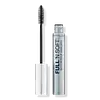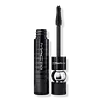What's inside
What's inside
 Key Ingredients
Key Ingredients

 Benefits
Benefits

 Concerns
Concerns

 Ingredients Side-by-side
Ingredients Side-by-side

Petroleum Distillates
SolventC8-9 Isoparaffin
SolventDisteardimonium Hectorite
StabilisingBeeswax
Emulsion StabilisingCopernicia Cerifera Wax
Water
Skin ConditioningSynthetic Beeswax
Emulsion StabilisingAllyl Stearate/Va Copolymer
Paraffin
PerfumingPropylene Carbonate
SolventPolyvinyl Laurate
Silica
AbrasiveOryza Sativa Starch
AbsorbentPanthenol
Skin ConditioningHydrolyzed Corn Starch
HumectantMethylparaben
PreservativeIsoceteth-20
EmulsifyingLecithin
EmollientAcrylates Copolymer
Ethylene/Methacrylate Copolymer
Tocopheryl Acetate
AntioxidantDisodium EDTA
Disodium Cocoamphodiacetate
CleansingOleamide
2-Oleamido-1,3-Octadecanediol
Skin ConditioningSimethicone
EmollientDiazolidinyl Urea
PreservativePropylparaben
PreservativeCI 77492
Cosmetic ColorantCI 77499
Cosmetic ColorantCI 77491
Cosmetic ColorantCI 75470
Cosmetic ColorantCI 77007
Cosmetic ColorantCI 77288
Cosmetic ColorantCI 77289
Cosmetic ColorantMica
Cosmetic ColorantCI 77891
Cosmetic ColorantCI 77510
Cosmetic ColorantPetroleum Distillates, C8-9 Isoparaffin, Disteardimonium Hectorite, Beeswax, Copernicia Cerifera Wax, Water, Synthetic Beeswax, Allyl Stearate/Va Copolymer, Paraffin, Propylene Carbonate, Polyvinyl Laurate, Silica, Oryza Sativa Starch, Panthenol, Hydrolyzed Corn Starch, Methylparaben, Isoceteth-20, Lecithin, Acrylates Copolymer, Ethylene/Methacrylate Copolymer, Tocopheryl Acetate, Disodium EDTA, Disodium Cocoamphodiacetate, Oleamide, 2-Oleamido-1,3-Octadecanediol, Simethicone, Diazolidinyl Urea, Propylparaben, CI 77492, CI 77499, CI 77491, CI 75470, CI 77007, CI 77288, CI 77289, Mica, CI 77891, CI 77510
Water
Skin ConditioningSilica
AbrasiveStearic Acid
CleansingGlyceryl Stearate
EmollientSynthetic Beeswax
Emulsion StabilisingParaffin
PerfumingPolyisobutene
Kaolin
AbrasiveAcrylates/Ethylhexyl Acrylate Copolymer
Aminomethyl Propanediol
BufferingCopernicia Cerifera Wax
Vp/Eicosene Copolymer
Isostearic Acid
CleansingTocopheryl Acetate
AntioxidantPanthenol
Skin ConditioningPantethine
EmollientTrimethylpentanediol/Adipic Acid/Glycerin Crosspolymer
Skin ConditioningPEG-9 Dimethicone
Skin ConditioningCaprylyl Glycol
EmollientHydroxyethylcellulose
Emulsion StabilisingNylon-6
Pvp
Emulsion StabilisingLaureth-21
CleansingSimethicone
EmollientPhenethyl Alcohol
Masking1,2-Hexanediol
Skin ConditioningDisodium EDTA
Chloroxylenol
AntimicrobialPotassium Sorbate
PreservativePhenoxyethanol
PreservativeCI 77491
Cosmetic ColorantCI 77492
Cosmetic ColorantCI 77499
Cosmetic ColorantMica
Cosmetic ColorantCI 19140
Cosmetic ColorantCI 77288
Cosmetic ColorantCI 77289
Cosmetic ColorantCI 75470
Cosmetic ColorantCI 77891
Cosmetic ColorantCI 77163
Cosmetic ColorantCI 42090
Cosmetic ColorantCI 77007
Cosmetic ColorantCI 77266
Cosmetic ColorantWater, Silica, Stearic Acid, Glyceryl Stearate, Synthetic Beeswax, Paraffin, Polyisobutene, Kaolin, Acrylates/Ethylhexyl Acrylate Copolymer, Aminomethyl Propanediol, Copernicia Cerifera Wax, Vp/Eicosene Copolymer, Isostearic Acid, Tocopheryl Acetate, Panthenol, Pantethine, Trimethylpentanediol/Adipic Acid/Glycerin Crosspolymer, PEG-9 Dimethicone, Caprylyl Glycol, Hydroxyethylcellulose, Nylon-6, Pvp, Laureth-21, Simethicone, Phenethyl Alcohol, 1,2-Hexanediol, Disodium EDTA, Chloroxylenol, Potassium Sorbate, Phenoxyethanol, CI 77491, CI 77492, CI 77499, Mica, CI 19140, CI 77288, CI 77289, CI 75470, CI 77891, CI 77163, CI 42090, CI 77007, CI 77266
 Reviews
Reviews

Ingredients Explained
These ingredients are found in both products.
Ingredients higher up in an ingredient list are typically present in a larger amount.
Ci 75470 is a bright-red pigment. It is AKA carmine.
Carmine is derived from insects such as the cochineal beetle. This ingredient has been used as a natural dye for over 2000 years.
This pigment is called Ultramarine blue lazurite. It gives a saturated blue color, but can be used to create other colors as well.
According to the manufacturer, it is usually made from kaolin, sodium sulfate, sodium carbonate, sulfur, and charcoal.
Ci 77288 is used to add green pigment to products.
We don't have a description for CI 77289 yet.
Ci 77491 is also hydrated iron III oxide. It's sole purpose is to give a red/pink hue to products.
Iron III oxides are classified as inorganic chemicals for coloring.
Synthetically created Ci 77491 is considered safer than those naturally found. This is because the synthetically created version may contain less impurities. Iron oxides are generally non-toxic and non-allergenic.
Learn more about CI 77491Ci 77492 is also hydrated iron III oxide. It's sole purpose is to give a yellow hue to products.
Iron III oxides are classified as inorganic chemicals for coloring.
Synthetically created Ci 77492 is considered safer than those naturally found. This is because the synthetically created version may contain less impurities. Iron oxides are generally non-toxic and non-allergenic.
Learn more about CI 77492Ci 77499 is also hydrated iron III oxide. It is created from mixing red and black iron oxides. This helps give shades of darkness to a product.
Iron III oxides are classified as inorganic chemicals for coloring.
Ci 77891 is a white pigment from Titanium dioxide. It is naturally found in minerals such as rutile and ilmenite.
It's main function is to add a white color to cosmetics. It can also be mixed with other colors to create different shades.
Ci 77891 is commonly found in sunscreens due to its ability to block UV rays.
Learn more about CI 77891Copernicia Cerifera Wax comes from a palm tree native to Brazil; another name for this ingredient is Carnauba Wax.
This ingredient is used to thicken texture and also leaves behind a film when applied.
Fun fact: This wax has the highest melting point of all natural waxes and low solubility.
Learn more about Copernicia Cerifera WaxDisodium EDTA plays a role in making products more stable by aiding other preservatives.
It is a chelating agent, meaning it neutralizes metal ions that may be found in a product.
Disodium EDTA is a salt of edetic acid and is found to be safe in cosmetic ingredients.
Learn more about Disodium EDTAMica is a naturally occurring mineral used to add shimmer and color in cosmetics. It can also help improve the texture of a product or give it an opaque, white/silver color.
Serecite is the name for very fine but ragged grains of mica.
This ingredient is often coated with metal oxides like titanium dioxide. Trace amounts of heavy metals may be found in mica, but these metals are not harmful in our personal products.
Mica has been used since prehistoric times throughout the world. Ancient Egyptian, Indian, Greek, Roman, Aztec, and Chinese civilizations have used mica.
Learn more about MicaPanthenol is a common ingredient that helps hydrate and soothe the skin. It is found naturally in our skin and hair.
There are two forms of panthenol: D and L.
D-panthenol is also known as dexpanthenol. Most cosmetics use dexpanthenol or a mixture of D and L-panthenol.
Panthenol is famous due to its ability to go deeper into the skin's layers. Using this ingredient has numerous pros (and no cons):
Like hyaluronic acid, panthenol is a humectant. Humectants are able to bind and hold large amounts of water to keep skin hydrated.
This ingredient works well for wound healing. It works by increasing tissue in the wound and helps close open wounds.
Once oxidized, panthenol converts to pantothenic acid. Panthothenic acid is found in all living cells.
This ingredient is also referred to as pro-vitamin B5.
Learn more about PanthenolParaffin is a solid created from petroleum. The term 'paraffin' can also refer to either
petroleum jelly or mineral oil.
It has natural occlusive properties which can worsen oily skin. Due to its petrolatum base, this ingredient is not fungal-acne safe.
Silica, also known as silicon dioxide, is a naturally occurring mineral. It is used as a fine, spherical, and porous powder in cosmetics.
Though it has exfoliant properties, the function of silica varies depending on the product.
The unique structure of silica enhances the spreadability and adds smoothness, making it a great texture enhancer.
It is also used as an active carrier, emulsifier, and mattifier due to its ability to absorb excess oil.
In some products, tiny microneedles called spicules are made from silica or hydrolyzed sponge. When you rub them in, they lightly polish away dead skin layers and enhance the penetration of active ingredients.
Learn more about SilicaSimethicone is a silicone. It is an emollient and used to reduce foaming in a product. It is also often used to coat sunscreen ingredients for better spreadability.
This ingredient is created by mixing dimethylpolysiloxane and hydrated silica.
Synthetic beeswax is created to be identical in structure to beeswax. It possesses the same occlusive and emulsion properties.
A blend of fatty acid esters, fatty acids, and alcohols are used to create synthetic beeswax. Whether or not this ingredient is vegan depends on the source. Sometimes, lanolin is used for its creation.
This ingredient may not be Malassezia folliculitis, or fungal-acne safe.
Learn more about Synthetic BeeswaxTocopheryl Acetate is AKA Vitamin E. It is an antioxidant and protects your skin from free radicals. Free radicals damage the skin by breaking down collagen.
One study found using Tocopheryl Acetate with Vitamin C decreased the number of sunburned cells.
Tocopheryl Acetate is commonly found in both skincare and dietary supplements.
Learn more about Tocopheryl AcetateWater. It's the most common cosmetic ingredient of all. You'll usually see it at the top of ingredient lists, meaning that it makes up the largest part of the product.
So why is it so popular? Water most often acts as a solvent - this means that it helps dissolve other ingredients into the formulation.
You'll also recognize water as that liquid we all need to stay alive. If you see this, drink a glass of water. Stay hydrated!
Learn more about Water